
June 2011
Welcome to Net Results EXPRESS
Net Results EXPRESS (NRx) is an award-winning, monthly e-newsletter highlighting medical and scientific breakthroughs, major grants and honours awarded, and other research-related events at UHN. Through NRx you can read about ongoing research at our four research institutes, the Ontario Cancer Institute (OCI), the Toronto General Research Institute (TGRI), the Toronto Western Research Institute (TWRI) and the Toronto Rehabilitation Institute (TRI). We hope you will find this newsletter informative and helpful. If you have feedback or questions, please contact www@uhnresearch.ca. Christopher J. Paige, PhD, FCAHS |
UHN and Toronto Rehabilitation Institute Announce Their Integration
The combination of TRI and UHN will provide a wide range of translational research and services. “Quite simply becoming part of the University Health Network makes good sense,” said TRI President & CEO Mark Rochon. “Bringing these two organizations together will enable clinicians to initiate rehabilitation much sooner in the acute care phase of treatment which will enhance both the quality and continuity of care as well as outcomes for patients.” As of July 1, UHN will have approximately 14,000 employees, providing a wide range of health care services on the sites of theToronto General Hospital, Toronto Western Hospital, Princess Margaret Hospital and the five sites that make up TRI. For more information, please visit the integration website. |
Neurology: Stimulation of the Motor Cortex Improves Hand Tremors
Over a period of one year, motor cortex stimulation led to decreased hand tremor in patients with ET. PD patients, however, did not show signs of improvement. “The potential advantage of cortical stimulation is that it is less complex to perform than conventional therapies, is safer for the patient and, for patients with ET, it can decrease hand tremor symptoms,” says Dr. Moro. Unilateral subdural motor cortex stimulation improves essential tremor but not Parkinson's disease. Moro E, Schwalb JM, Piboolnurak P, Poon YY, Hamani C, Hung SW, Arenovich T, Lang AE, Chen R, Lozano AM. Brain. 2011 Jun 6. [Pubmed abstract] This work was supported by Parkinson Society Canada. |
Leukemia: New Cancer Stem Cell Factor Identified
By analyzing the expression of genes in leukemic cells derived from AML patients, they identified EAR-2, a gene with no previously characterized role, as being associated with the ability of these leukemic cells to survive and grow under artificial conditions. The investigators were able to show that elevated expression of EAR-2 in cells led to a prolonged growth, while decreases in EAR-2 expression led to differentiation and arrest in growth. “The results of this study provide two major findings. The first is the identification of a new factor controlling the ability of leukemic cells to grow and differentiate,” says Dr. Iscove. “The second finding is that we now have a new potential therapeutic target in leukemia. By inhibiting EAR-2 we may be able to promote the terminal differentiation of leukemic cells and stop the growth of the disease.” Identification of a role for the nuclear receptor EAR-2 in the maintenance of clonogenic status within the leukemia cell hierarchy. Ichim CV, Atkins HL, Iscove NN, Wells RA. Leukemia. 2011 Jun 3. [Pubmed abstract] This work was supported by a donation from the estate of J Douglas Crashley, the Canadian Institutes of Health Research, the Terry Fox Foundation, the Princess Margaret Hospital Foundation, the Health Sciences Centre Foundation and the Ontario Ministry of Health and Long-Term Care. |
Cardiology: New Role for Protein Involved in Heart Function
“Our research suggests that PINK1 is an important switch that sets off a cascade of events affecting heart cell metabolism,” says lead author Dr. Phyllis Billia, Clinical Investigator at OCI and at the Peter Munk Cardiac Centre. “The discovery of PINK1's role in the development of heart failure may lead to a new treatment approach to prevent heart failure in those at risk. This discovery represents a novel and as yet, untapped mechanism to fight the battle against heart failure," adds Dr. Vivek Rao, co-author of the study and Senior Scientist at the TGRI. PTEN-inducible kinase 1 (PINK1)/Park6 is indispensable for normal heart function. Billia F, Hauck L, Konecny F, Rao V, Shen J, Mak TW. Proceedings of the National Academy of Sciences. 2011 May 23. [Pubmed abstract] This work was supported by a grant from the Canadian Institutes of Health Research. |
Myeloma: Antitumour Activity with New Therapeutic Drug
The team examined the effect of GTx-134 on the inhibition of growth in 14 different types of MM cancer cells, which serve as an experimental model for cancer. They observed that 11 out of the 14 types of cancer cells responded favourably to GTx-134 treatment through arrest of growth and cell death. The researchers hypothesized that the lack of response in the remaining MM cancer cells was due to a development of resistance to GTx-134. To avoid this potential problem, they examined the effect of co-treatment of MM cell lines with this drug and other conventional chemotherapy agents. This was observed to have a synergistic effect (the drugs had a greater total effect when used together than the sum of individual effects of each drug) in inhibiting cancer growth. “By targeting IGF-1R, we are developing a drug that could better serve patients with an aggressive form of this disease,” says Dr. Trudel. “The findings from this study, combined with data showing that GTx-134 is safe and tolerable, indicate that it could serve as an effective treatment alone or in combination with other therapies.” Molecular target characterization and anti-myeloma activity of then novel, insulin-like growth factor 1 receptoriInhibitor, GTx-134. Liang SB, Yang XZ, Trieu Y, Li ZH, Zive J, Leung-Hagesteijn C, Wei E, Zozulya S, Coss CC, Dalton JT, Fantus IG, Trudel S. Clinical Cancer Research. 2011 Jun 1. [Pubmed abstract] This study was supported by grants from the Ontario Institute for Cancer Research, the Multiple Myeloma Research Foundation and the Canadian Institutes of Health Research. |
Stem Cells: Characterizing Neural Stem Cell Development
“Our method of stem cell maturation follows the model of ‘default mechanism’,” says Dr. Fehlings. “In the absence of any factors directing changes of stem cells into a specific cell type, stem cells will intrinsically develop into neuronal cells.” Following this model, his group characterized the changes in gene expression of definitive neural stem cells (dNSC) as they mature into neuronal cells when transplanted into shiverer mice. Shiverer mice are an experimental strain of mice with dysfunctional oligodendrocytes, causing improper spinal cord function. Oligodendrocytes are a type of neuronal cell that insulates, or myelinates, the signaling axons of nerve cells and are critical for the function of the nervous system. In addition to characterizing the changes that occur during the maturation process of dNSCs, they observed that they did indeed produce oligodendrocytes that became integrated with the nervous system of the mouse and expressed proteins associated with myelination. “This is the first study to show the differentiation of transplanted neural stem cells into oligodendrocytes in an animal model through the default mechanism,” added Dr. Fehlings. “This approach is a very promising potential strategy for repairing spinal cord injury.” Generation of neural stem cells from embryonic stem cells using the default mechanism: in vitro and in vivo characterization. Rowland JW, Lee JJ, Salewski RP, Eftekharpour E, van der Kooy D, Fehlings MG. Stem Cells and Development. 2011 May 23. [Pubmed abstract] This work was supported by the Multiple Sclerosis Society of Canada, the Canadian Institutes of Health Research, the Krembil Neuroscience Fund and the Krembil Foundation. |
 |
![]()
| Remembering Betty Fox |
On June 17, 2011, Betty Fox, the mother of Terry Fox, passed away. Betty will be remembered for her passion and support of cancer research through her work with the Terry Fox Foundation. The Foundation was created to help support disease-based research through funding of the nation’s best scientists. More recently, the Foundation expanded its research focus to speed up the impact of cancer research by creating the Terry Fox Research Institute. Through the Foundation, Betty helped to raise over $550 million to support research and awareness. Since 2006, UHN has received over $17 million in financial support from the Foundation for research. Betty Fox’s work was greatly appreciated and she will be deeply missed. |
| Gang Zheng Named UHN 2010 Inventor of the Year |
Dr. Zheng’s research focus involves the creation of a unique organic nanoparticle delivery platform capable of transporting cancer therapeutics directly to tumours. This technology has the potential to reduce side effects in patients due to the biocompatible nature of the nanocarriers and the targeted delivery of the drugs. UHN, in collaboration with the Ontario Institute for Cancer Research (OICR), has recently formed a Toronto-based biotechnology company called DLVR Therapeutics Incorporated, to rapidly advance the commercialization of this technology for the benefit of patients in Ontario and around the world. Dr. Zheng recently developed a new class of nanoparticles, called porphysomes, which convert light to heat in an energy efficient manner. When accumulated in tumours, porphysomes converted light from a laser and successfully destroyed the tumours through photoablation. Dr. Zheng holds the Joey and Toby Tanenbaum/Brazilian Ball Chair in prostate cancer research. His work is supported by national and international granting agencies such as the Canadian Institutes of Health Research, OICR, the Ministry of Research and Innovation, and the National Institutes of Health. His work has been published in over 100 publications, including prestigious journals like Nature Materials and the Proceedings of the National Academy of Sciences. |
| Charles Tator Honoured with Global Impact Award |
Dr. Tator’s research focus involves spinal cord and brain injury. His contributions to the field include the developing the first acute spinal cord injury unit in Canada, demonstrating that post-traumatic ischemia is a major secondary injury mechanism, and inventing the inclined plane technique of functional assessment. Recently his research has expanded to sports and recreational injuries to the brain and spine, with the development of the Krembil Neuroscience Centre Sports Concussion Project. Dr. Tator was appointed a Member of the Order of Canada in 2000, and inducted into the Terry Fox Hall of Fame in 2003 and Canadian Medical Hall of Fame in 2009. |
| Stem Cell City Opens |
To find out more about Stem Cell City, please visit their website. |
| UHN Announces Joint Venture with CPDC to Expand Use of Molecular Probes |
UHN and the Centre for Probe Development and Commercialization (CPDC) have announced a joint venture—The Canadian Molecular Imaging Probe Consortium (CanProbe)—to advance the development and use of medical isotopes for diagnosing and treating cancer and other serious diseases. This initiative will focus on advancing new radiopharmaceuticals to meet the growing Canadian and global demand for advanced diagnostic and therapeutic probes. CanProbe will establish a new research, production and distribution centre in Toronto, supplying important molecular probes to support research and clinical imaging programs for UHN-affiliated hospitals and for the global nuclear medicine community. The Centre will also work to introduce new molecular imaging probes to Ontario through its own research and development efforts and by gaining approval to manufacture imaging probes that are successfully used in other parts of the world. CanProbe will provide complete concept-to-clinic services in probe development that include research, development, regulatory approvals, clinical trials, manufacturing and distribution. |
| Dr. Michael Jewett Honoured with Prestigious Awards |
|
| Two OCI Researchers Recognized for their Contributions to Radiology |
Dr. Robert Bristow, Senior Clinician Scientist at OCI and PMH, was also awarded Honorary Membership into the ESTRO for his developments in basic research for the field of Radiotherapy. Only two scientists per year receive this honour. |
| OCI Researcher Lauded |
Congratulations Dr. Cummings! |
Feedback
Net Results EXPRESS is brought to you by UHN Research Communications. We hope you have enjoyed receiving this message. If you have any feedback, please email www@uhnresearch.ca.
To access archived issues of Net Results EXPRESS, visit uhnresearch.ca/news/netresultsexpress
Some images adapted from the image archives of stock.xchng.ca.
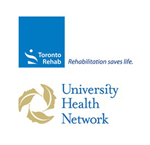 UHN and the Toronto Rehabilitation Institute (TRI) have given final approval for the integration of these two hospitals, effective July 1, 2011. TRI is a leading academic provider of adult rehabilitation services, complex continuing care and long-term care, and is revolutionizing rehabilitation knowledge and practice through research and education to maximize life.
UHN and the Toronto Rehabilitation Institute (TRI) have given final approval for the integration of these two hospitals, effective July 1, 2011. TRI is a leading academic provider of adult rehabilitation services, complex continuing care and long-term care, and is revolutionizing rehabilitation knowledge and practice through research and education to maximize life.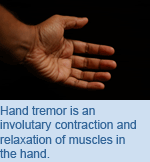 TWRI’s Drs.
TWRI’s Drs.  Research into the development of acute myelogenous leukemia (AML), the most common form of leukemia in adults, is hindered by the fact that leukemic cells are not a uniform population but are in fact at different stages of development, with different growth properties. These mixed cell populations prevent investigators from identifying the genetic components involved in the growth and differentiation of leukemia cells. A recent study from the labs of OCI Senior Scientist Dr.
Research into the development of acute myelogenous leukemia (AML), the most common form of leukemia in adults, is hindered by the fact that leukemic cells are not a uniform population but are in fact at different stages of development, with different growth properties. These mixed cell populations prevent investigators from identifying the genetic components involved in the growth and differentiation of leukemia cells. A recent study from the labs of OCI Senior Scientist Dr. 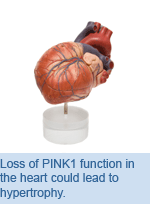 Researchers at TGRI and OCI have discovered a protein switch that can trigger a cascade of events leading to heart failure. The findings, published in the Proceedings of the National Academy of Sciences, show that the absence of PINK1, a protein involved in cell metabolism, induces heart cells to produce less energy. This lack of energy causes some heart cells to die, forcing the remaining cells to work harder to keep the heart going. In response to this stress the heart muscle cells thicken, a condition known as hypertrophy.
Researchers at TGRI and OCI have discovered a protein switch that can trigger a cascade of events leading to heart failure. The findings, published in the Proceedings of the National Academy of Sciences, show that the absence of PINK1, a protein involved in cell metabolism, induces heart cells to produce less energy. This lack of energy causes some heart cells to die, forcing the remaining cells to work harder to keep the heart going. In response to this stress the heart muscle cells thicken, a condition known as hypertrophy.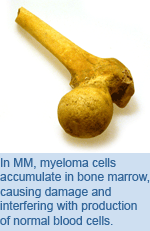 Multiple myeloma (MM) is a cancer of B lymphocytes, the immune cells responsible for the production of antibodies, and is diagnosed in over 2,000 Canadians every year. Elevated expression of insulin-like growth factor 1 receptor (IGF-1R) is associated with aggressive conditions of MM and poor prognosis for patient survival. IGF-1R is a special receptor for the hormone IGF-1 that plays an important role in childhood growth and metabolism in adults. OCI Scientist Dr.
Multiple myeloma (MM) is a cancer of B lymphocytes, the immune cells responsible for the production of antibodies, and is diagnosed in over 2,000 Canadians every year. Elevated expression of insulin-like growth factor 1 receptor (IGF-1R) is associated with aggressive conditions of MM and poor prognosis for patient survival. IGF-1R is a special receptor for the hormone IGF-1 that plays an important role in childhood growth and metabolism in adults. OCI Scientist Dr. 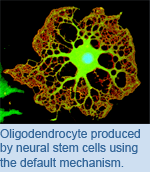 The use of neural stem cells, cells that can develop into the different types of brain cells, to repair injured regions of the central nervous system is a promising potential therapeutic approach, however its successful use requires a better understanding of the underlying mechanisms and standardized techniques for neural cell maturation. TWRI and McEwen Centre for Regenerative Medicine’s Dr.
The use of neural stem cells, cells that can develop into the different types of brain cells, to repair injured regions of the central nervous system is a promising potential therapeutic approach, however its successful use requires a better understanding of the underlying mechanisms and standardized techniques for neural cell maturation. TWRI and McEwen Centre for Regenerative Medicine’s Dr.  UHN’s 2010 Inventor of the Year Award was presented to OCI Senior Scientist Dr. Gang Zheng.
This award, sponsored through UHN’s Technology Development and Commercialization Office, is presented to a UHN researcher who has made an outstanding and inventive contribution to patient-oriented biomedical research.
UHN’s 2010 Inventor of the Year Award was presented to OCI Senior Scientist Dr. Gang Zheng.
This award, sponsored through UHN’s Technology Development and Commercialization Office, is presented to a UHN researcher who has made an outstanding and inventive contribution to patient-oriented biomedical research. UHN’s 2011 Global Impact Award was presented to TWRI Senior Scientist Dr. Charles Tator.This award is given to UHN staff who have been leaders in medicine and science, and whose past work has led to improvements in health care well beyond our borders. Dr. Tator was selected as this year’s recipient, in recognition of his pioneering research in spinal cord injury in Canada, and as an international leader in prevention of head injury.
UHN’s 2011 Global Impact Award was presented to TWRI Senior Scientist Dr. Charles Tator.This award is given to UHN staff who have been leaders in medicine and science, and whose past work has led to improvements in health care well beyond our borders. Dr. Tator was selected as this year’s recipient, in recognition of his pioneering research in spinal cord injury in Canada, and as an international leader in prevention of head injury. On June 15, McEwen Centre for Regenerative Medicine co-founders Rob and Cheryl McEwen announced the creation of Stem Cell City—a virtual community designed to inform the public about stem cell research and allow them to articulate their support of using regenerative medicine to fight disease. Joining the McEwens for this event were the McEwen Centre’s Director Dr. Gordon Keller, Ontario Premier Dalton McGuinty, Minister of Citizenship and Education Dr. Eric Hoskins, UHN CEO and President Dr. Robert Bell, California Institute for Regenerative Medicine (CIRM) Chairman Robert Klein and patient advocate Lisa Ray.
On June 15, McEwen Centre for Regenerative Medicine co-founders Rob and Cheryl McEwen announced the creation of Stem Cell City—a virtual community designed to inform the public about stem cell research and allow them to articulate their support of using regenerative medicine to fight disease. Joining the McEwens for this event were the McEwen Centre’s Director Dr. Gordon Keller, Ontario Premier Dalton McGuinty, Minister of Citizenship and Education Dr. Eric Hoskins, UHN CEO and President Dr. Robert Bell, California Institute for Regenerative Medicine (CIRM) Chairman Robert Klein and patient advocate Lisa Ray.
 Dr. Michael Jewett, Clinical Investigator at OCI and TGRI, was the recipient of two awards at the 2011 Annual Scientific meeting of the American Urological Association (AUA). Dr. Jewett received the AUA Distinguished Contribution Award 2011 for his outstanding contributions to science and the treatment of urological malignancies and the Society of Urologic Oncology Medal for his achievements and contributions in the field of urologic oncology.
Dr. Michael Jewett, Clinical Investigator at OCI and TGRI, was the recipient of two awards at the 2011 Annual Scientific meeting of the American Urological Association (AUA). Dr. Jewett received the AUA Distinguished Contribution Award 2011 for his outstanding contributions to science and the treatment of urological malignancies and the Society of Urologic Oncology Medal for his achievements and contributions in the field of urologic oncology.  Dr. Bradly Wouters, Senior Scientist and Director of the Hypoxia and Microenvironment Program at OCI, was awarded the Klaas Breur Gold Medal Award from the European Society for Therapeutic Radiology and Oncology (ESTRO). The Klaas Breur Award was given in recognition of Dr. Wouters major scientific contributions to the field of radiotherapy and is the most prestigious prize given by ESTRO. Dr. Wouters will receive this award and deliver the Gold Medal Lecture in Stockholm in September of this year.
Dr. Bradly Wouters, Senior Scientist and Director of the Hypoxia and Microenvironment Program at OCI, was awarded the Klaas Breur Gold Medal Award from the European Society for Therapeutic Radiology and Oncology (ESTRO). The Klaas Breur Award was given in recognition of Dr. Wouters major scientific contributions to the field of radiotherapy and is the most prestigious prize given by ESTRO. Dr. Wouters will receive this award and deliver the Gold Medal Lecture in Stockholm in September of this year.  Dr. Bernard Cummings, Professor of Radiation Oncology at the Princess Margaret Hospital and University of Toronto and a Clinical Investigator at OCI, is the recipient of the American Society for Radiation Oncology (ASTRO) 2011 Gold Medal. This award is given in recognition for outstanding contributions in research and clinical care in the field of radiation oncology. The award will be presented at the ASTRO’s 53rd Annual Meeting in early October.
Dr. Bernard Cummings, Professor of Radiation Oncology at the Princess Margaret Hospital and University of Toronto and a Clinical Investigator at OCI, is the recipient of the American Society for Radiation Oncology (ASTRO) 2011 Gold Medal. This award is given in recognition for outstanding contributions in research and clinical care in the field of radiation oncology. The award will be presented at the ASTRO’s 53rd Annual Meeting in early October.